Kathryn received her B.A. and M.A. in Political Science and began her first career in Marketing and Public Relations. Kathryn obtained her law degree from Osgoode in 2001 and was called to the Bar in 2002. She articled at a large boutique litigation firm in downtown Toronto. In 2006 she chose family law as her specialty and has practiced exclusively in family law since that time. In 2017 Kathryn started her own firm.
Kathryn is trained in alternative dispute resolution methods, including Collaborative Family Law and Family Arbitration. In 2015 Kathryn was appointed as a Dispute Resolution Officer (DRO) of the Superior Court of Justice in Toronto. Kathryn is a Past President and a life-member of the Women’s Law Association of Ontario. Kathryn is a current member of the OBA and is a current member of Counsel, a past Director and on numerous committees. Kathryn has contributed to the Law Society of Ontario, Women’s Business Enterprise Canada, Globe and Mail, and Canadian Lawyers Magazine. She is a member of the Toronto Lawyers Association, the Family Lawyers Association of Ontario and the Association of Family and Conciliation Courts.
Between her practice and time sitting as a DRO, Kathryn began to see the undeniable gap in the legal profession’s ability to best serve the public. So, Kathryn teamed up with a team of self-professed nerds and got to work on a solution. Online Divorce Forms is the result of what happens when parties seek to modernize courts processes with a self-represented litigant in mind. Kathryn presented Online Divorce Forms at the prestigious Stanford Law School Codex Event on February 14, 2019. Kathryn and Online Divorce Forms were honored with the 2019 Precedent Magazine Innovation Award.
We asked Kathryn about her background and daily challenges she faces as a Family Lawyer
1. How long have you been practicing law? How did you begin your law career?
I graduated from Osgoode Hall in 2001 and was called in 2002. I am in my 18th year of practice. I articled at Lerners LLP which provided me with a solid and robust foundation for my litigation practice. I always knew that I wanted to litigate and to help people. I am a naturally inclined to see both sides of an argument which is helpful in resolving issues between parties. I left Lerners and joined a small firm where the litigation partner was retiring. I inherited 100 active litigation files (approx.) which included civil litigation, personal injury, employment law and family law. I was exposed to a wide variety of litigation and the file load took me to court on average, twice a week. I learned my craft by standing on my feet in a variety of Court Rooms across the GTA. I interacted with a myriad of counsel most much more senior than me. I listened and learned.
2. What has your approach been to the ‘business of law’ side of the practice?
I have always seen both sides of the law; the practice and the business. Before becoming a lawyer, I was a Marketing Director for a major commercial and residential builder. I was involved in the corporate sector for almost 4 years. I learned a great deal in the corporate setting such as managing staff, setting expectations, and analyzing reports. The business side of law requires proficiency in these corporate skills with the added requirement of client management. The other critical factor is generating a network for referrals, mentors and support. You cannot do it all yourself. Networking and targeted meetings generate friendships, mentors, and if you are lucky, clients. This strategy requires a commitment to customer service, managing expectations, both yours and your client’s. I am so grateful to all of my mentors and my clients for their unending support of my wellbeing, my practice and my success.
3. What challenges are presenting themselves and how are you handling them?
The practice of law is changing and evolving before our very eyes. The old processes are not efficient and there has been a movement to modernize and integrate technology. I believe that we are at cross-roads in time where legal technology is sophisticated enough to enhance the legal experience.
One of the most challenging issues in family law, and law in general, is the rise of the self-represented litigant. Recent statistics tell us that more than 50% of Ontarians choose to self-represent when entering into the justice system. That means self-represented litigants are going to court to settle disputes without consulting a lawyer.
With the pace of new and emerging technologies, I find that I am constantly searching for new and better ways to engage clients and the courts. With the current Covid-19 crisis, I am implementing new remote communication protocols to engage with clients who feel uneasy around large downtown crowds, and technology is helping create a seamless service experience for them.
For all clients, meaningful access to justice must be affordable, timely, easy to understand, and easy to maneuver. Yet, the current Ontario processes, especially family law forms are text heavy, complex, and include repetitive information from one form to the next. This causes confusion and frustration for self-represented litigants. To that end, I took on the project to create a user-friendly family court forms and the Ontario Family Forms project was born. The program is easy to understand and reduces the administrative burden that a self-represented litigant face in managing forms. The tool asks a series of simple, plain-English questions to capture the nuances of a user’s situation, then guides them to the forms needed to move forward in court. The current iteration encompasses approximately 75% of use cases: separation, divorce, custody, access, child support, division of property, and spousal support.
4. What is a typical day like for you? What is the best part of your job?
A typical day is a client meeting, a court room, a mediation, a presentation and helping others. Of course, not all of those things happen in one day.
The best part of my job is a full and final resolution of a client’s family law issues. Attaining a final resolution brings closure and allows the client to move forward. A resolution can arrive in so many different ways that it keeps my practice interesting and engaging. I am always interested in what motivates clients in their decision making. I recognize that clients engage in both objective and subjective motivators and triggers. By understanding the emotional quotient of clients, win-win solutions can be generated. I take messy situations and start putting things in order. I like to build relationships around the person to help in every dimension. I think through problems both objectively and subjectively and encourage clients to resolve issues on a variety of levels.
5. On a totally different note, how do you like to spend your time when you are not at work?
I prioritize spending time with my family. Travel and exploring. Dining out with friends. Reading (fiction and non-fiction). Music concerts. Walking the dog. Learning. Teaching. Going to Stratford and Shaw Festival. Picking fruit in season like strawberries and apples. Writing poems and short stories. Crochet (I made poppies for Remembrance Day this year). Playing piano, but not very well.


